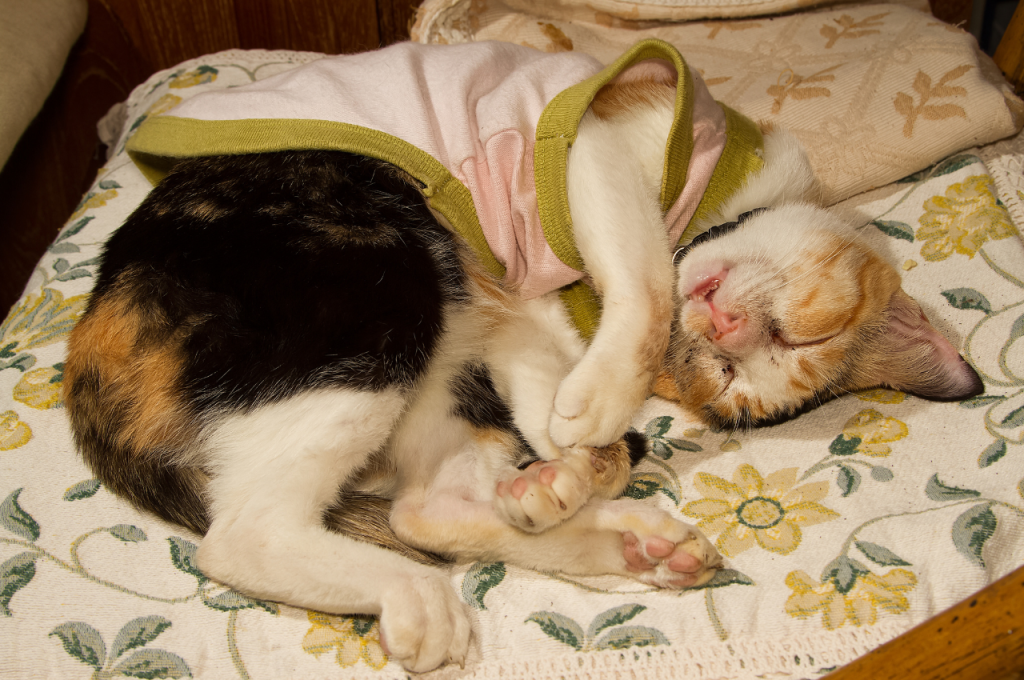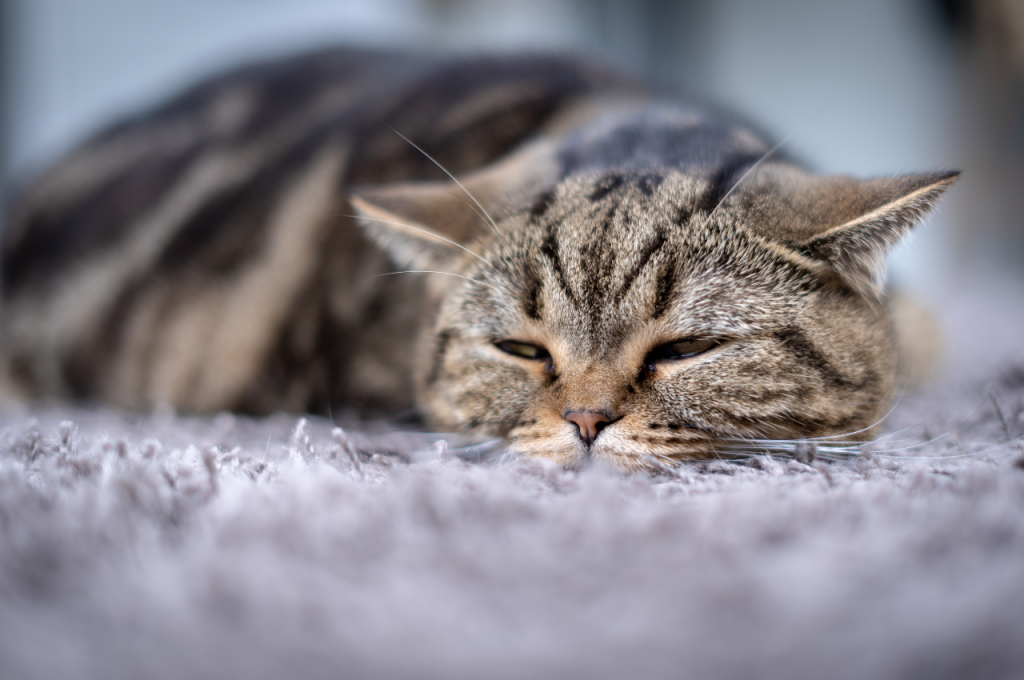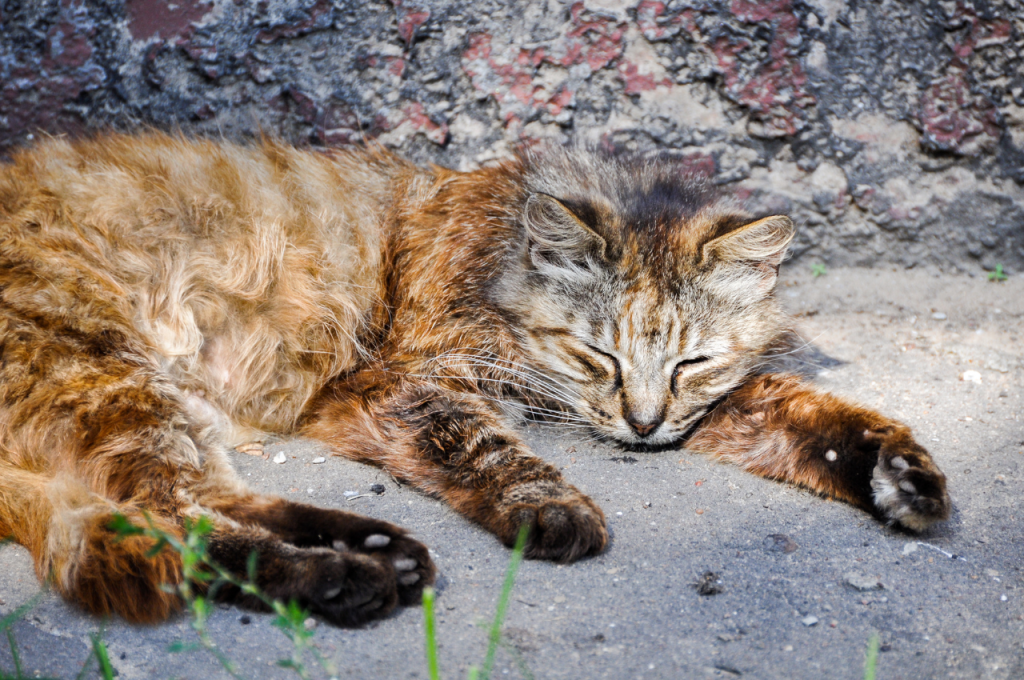When sick, cats may sleep in curled-up positions to conserve energy and stay warm. This behavior is a natural response to feeling unwell and can help them heal faster.
Cats may also seek out quiet and secluded spots to rest when they are not feeling well. It’s important to monitor your cat’s sleeping habits and behavior closely when they are sick to ensure they are getting the rest and care they need. By observing their sleeping positions and providing a comfortable environment, you can help your feline friend recover more quickly and comfortably. Remember to consult with a vet if you notice any concerning changes in your cat’s behavior or health.
Introduction to Cat Sleeping Habits
Cats are known for their unique and sometimes puzzling sleeping habits. Understanding a cat’s sleeping patterns can provide valuable insight into their overall well-being, especially when they are sick. Observing a cat’s sleeping positions and behaviors can help pet owners detect signs of illness early on, allowing for prompt veterinary care. In this post, we’ll delve into the normal sleep patterns of cats and explore why observing their sleep positions is crucial when they are unwell.

Normal Sleep Patterns
Cats are crepuscular animals, meaning they are most active during the twilight hours of dawn and dusk. Typically, cats spend a considerable amount of their day sleeping, with adult cats sleeping for an average of 12-16 hours a day. Their sleep patterns are characterized by intermittent periods of light and deep sleep, enabling them to remain alert to potential threats while still getting the rest they need.
Why Observing Sleep Positions is Important
Monitoring a cat’s sleeping positions is crucial for identifying any deviations from their normal behavior, especially when they are sick. Changes in their sleeping postures, such as excessive hiding, curled-up position for extended periods, or restlessness during sleep, can indicate underlying health issues. By paying attention to these subtle cues, pet owners can promptly seek medical attention, potentially preventing the progression of a serious illness.
Common Cat Sleeping Positions
When our feline friends are feeling under the weather, they often find solace in their sleeping routines. Just like humans, cats have a variety of sleeping positions that they prefer when they’re not feeling their best. Understanding these common cat sleeping positions can help us provide them with the care they need.
The Loaf
One of the most common cat sleeping positions is what’s affectionately known as “the loaf.” In this position, your cat tucks all four paws underneath their body and curls up into a compact loaf-like shape. It’s as if they’re trying to conserve energy and keep warm by minimizing their exposed surface area. The loaf position is often seen when cats are feeling a bit under the weather and want to retreat into a cozy and protective position.
The Side Sleeper
Another common cat sleeping position is the side sleeper. Cats in this position lie on their side with their legs stretched out. It’s a relaxed and comfortable posture that indicates a sense of security and contentment. When a sick cat chooses to sleep on their side, it can be a positive sign that they are feeling a little better and more at ease.
Curled Up
When feeling sick, cats often find comfort in curling up into a tight ball. This position, aptly named “curled up,” involves the cat tucking their legs underneath their body and bringing their head close to their tail. It’s a defensive posture that helps cats retain body heat and protect vulnerable areas. If you find your cat curled up while they’re unwell, it’s a good indication that they’re seeking comfort and warmth.
Belly Up
Sometimes, cats will surprise us by sleeping on their backs with their bellies exposed. This position, known as “belly up,” is a sign of trust and relaxation. Cats who feel safe and secure in their environment may choose to sleep in this vulnerable position. However, when a sick cat sleeps belly up, it may indicate a level of discomfort or pain. It’s important to monitor their behavior closely and consult with a veterinarian if necessary.
Understanding these common cat sleeping positions can give us valuable insights into our feline companions’ well-being. By observing their sleeping habits, we can better provide them with the care and comfort they need when they’re feeling sick.
Signs Your Cat Might be Sick
Signs your cat might be sick can often be observed through changes in their sleeping positions. Cats typically have a preferred sleeping posture, but if your cat starts sleeping in unusual or uncomfortable positions, it could indicate discomfort or illness. For instance, if your cat is sleeping more curled up than usual, or in a hunched position, it might be trying to protect a sore area or manage pain. Additionally, if your cat seems restless or unable to settle into a comfortable position, it could be a sign of underlying health issues. Observing these changes and consulting with a veterinarian can help ensure your cat receives the appropriate care and treatment.
Changes in Appetite
Observe your cat’s eating habits. A sudden decrease or increase in appetite can indicate illness. Check for any refusal to eat or overly voracious appetite. Both can be signs of a health issue.
Lethargy
Notice if your cat is less active than usual. Lack of energy, excessive sleeping, or reluctance to play could be signs of illness. Keep an eye on any dramatic changes in activity levels.
Unusual Behavior
Pay attention to any abnormal behaviors. Excessive grooming, hiding, or irritability can indicate discomfort or pain. Take note of any unusual actions in your cat.
Decoding The Signs: Sick Cat Sleeping Positions
When our feline friends aren’t feeling their best, they often display certain sleeping positions that can indicate illness. As cat owners, it’s important for us to understand these signs and be able to decode what our furry companions are trying to tell us. In this article, we will explore three common sick cat sleeping positions and what they might indicate about your cat’s health.

Tight Ball Position
One of the telltale signs that your cat may be feeling under the weather is when they curl up into a tight ball while sleeping. This position is characterized by the cat tucking their head under their body and wrapping their tail tightly around themselves. It’s as if they are trying to make themselves as small and protected as possible.
When a cat assumes the tight ball position, it could be a sign of discomfort or pain. This position helps them conserve body heat and protect vulnerable areas. If you notice your cat consistently sleeping in this position, it’s essential to monitor their behavior and look for other signs of illness such as loss of appetite, lethargy, or changes in litter box habits.
Hiding While Sleeping
Another sick cat sleeping position to be aware of is when your feline friend chooses to hide while sleeping. Cats are known for their love of cozy hiding spots, but when they are unwell, they may seek out even more secluded areas to rest. This could include hiding under furniture, inside closets, or in other hard-to-reach places.
If your cat starts hiding while sleeping, it could be a sign that they are feeling vulnerable or anxious due to their illness. They may be seeking a sense of security or trying to escape from any potential threats. It’s important to respect their need for privacy but also keep a close eye on their behavior to ensure they are not isolating themselves excessively.
Constantly Changing Positions
A third indication of a sick cat sleeping position is when your cat constantly changes positions while sleeping. Healthy cats tend to settle into a comfortable position and stay relatively still throughout their nap. However, when a cat is unwell, they may find it difficult to get comfortable, leading them to frequently shift positions.
If you observe your cat continuously changing positions during sleep, it could be a sign of discomfort or pain in different parts of their body. This could be due to various health issues, including arthritis, injury, or internal problems. It’s crucial to consult with your veterinarian if you notice this behavior to determine the underlying cause and provide appropriate medical attention.
In conclusion, understanding the various sick cat sleeping positions can help us identify when our furry companions are not feeling their best. By paying attention to their sleeping habits and observing any changes, we can provide them with the necessary care and support they need to recover and thrive.
Why Cats Change Their Sleeping Positions When Sick
When cats are sick, they often change their sleeping positions to find comfort and manage pain. Unlike their usual sleeping habits, a sick cat might curl up tightly or adopt unusual postures to protect sore areas or alleviate discomfort. These changes can also indicate that the cat is struggling with fever, nausea, or other health issues. Monitoring these alterations in sleep behavior and consulting a vet can provide insights into your cat’s health and help ensure timely medical intervention.
Seeking Comfort
Cats may change their sleeping positions when sick to seek comfort. They may curl up in a ball or find a cozy spot to rest and feel secure.
Regulating Body Temperature
When unwell, cats may alter their sleeping positions to regulate their body temperature. They may seek warmth or coolness depending on their condition.
Pain Management
Changing sleeping positions can also help cats manage pain when they are sick. They may adjust their posture to alleviate discomfort and find relief.
How to Help Your Sick Cat
When your cat is sick, it’s important to pay attention to their sleeping positions. Cats may curl up in a ball or lay stretched out when feeling unwell. Provide a comfortable, quiet space for your cat to rest and monitor their behavior for any signs of discomfort.
If your furry friend is under the weather, it’s important to create a comfortable environment for them to rest and recover. One of the key factors in providing a comfortable space for your cat is to consider their sleeping positions. Here are some tips on how to help your sick cat sleep comfortably.
Creating a Comfortable Resting Area
Cats love to sleep, especially when they’re feeling sick. Therefore, you should provide them with a comfortable and cozy place to rest. You can create a comfortable resting area for your cat by following these simple steps:
- Choose a quiet and warm area of your home
- Provide a soft and cozy bed with blankets or towels
- Make sure the bed is easily accessible and away from any drafts
- Keep your cat’s litter box nearby, so they don’t have to travel far
Maintaining a Quiet Environment
Cats are sensitive to noise, and it can be stressful for them when they’re sick. Therefore, it’s important to maintain a quiet environment for your cat. Here are some tips for keeping the noise level down:
- Avoid loud music or TV shows
- Ask family members to speak softly around the cat
- Close the windows to block out outside noise
Consulting a Veterinarian
If you notice any changes in your cat’s sleeping patterns or behavior, it’s crucial to take them to a veterinarian. The vet can examine your cat and diagnose any underlying health issues. They can also provide medication to help your cat feel better. Remember, early detection can help prevent serious health problems. In conclusion, providing a comfortable sleeping environment for your sick cat can help speed up the recovery process. By following these tips, you can help your furry friend feel better and get back to their happy, healthy self.
Monitoring Your Cat’s Sleep for Health
Monitoring your cat’s sleep patterns is crucial for maintaining their health. Changes in sleep duration, positions, or frequency can indicate underlying health issues. For instance, excessive lethargy or restlessness might signal discomfort or illness. Regular observation can help you identify these signs early and seek veterinary advice if necessary. Tracking your cat’s sleep habits provides valuable insights into their overall well-being and can aid in detecting potential health problems before they escalate.
Keeping a Sleep Diary
When your cat is sick, keeping a sleep diary can provide valuable insights into their health. Note the times your cat sleeps, wakes up, and any unusual behaviors during sleep. Use a simple notebook or a dedicated app to record this information.
Noticing Patterns Over Time
Noticing patterns over time can help you understand your cat’s health. Look for changes in sleep duration, frequency, or unusual positions. These patterns can alert you to potential health issues and guide your decisions on seeking veterinary care.
The Importance of Being Attentive
Being attentive to your cat’s sleeping positions when sick is crucial for early detection of health issues. Monitoring changes in their sleeping habits can help you provide timely care and attention to ensure your feline friend’s well-being.

Early Detection
Recognizing the early signs of illness in your cat is crucial for their well-being. By paying attention to changes in their sleeping positions and behavior, you can detect potential health issues before they escalate.
Fostering a Strong Bond
Understanding your cat’s normal sleeping habits allows you to detect deviations that could indicate illness. By fostering a strong emotional connection, you can enhance your ability to identify when they are unwell. When it comes to your cat’s health, being attentive to their sleeping positions and behavior is crucial. Early detection and fostering a strong bond enable you to provide the care they need when they are sick.
Conclusion
Observing your sick cat’s sleeping positions can provide valuable insights into their health. It is important to pay attention to any changes in their behavior and consult with a veterinarian if necessary. By understanding the different positions and their meanings, you can better care for your furry friend and ensure they receive the proper care and attention they need.
